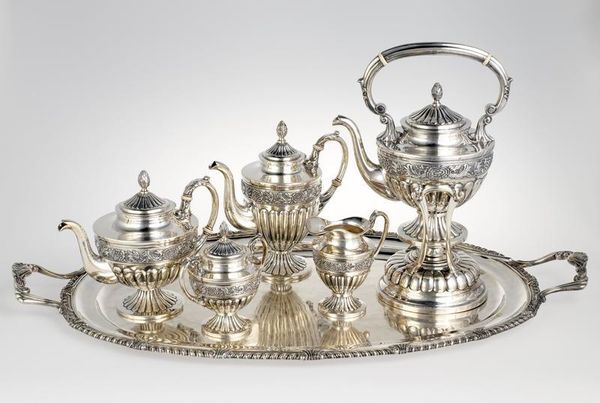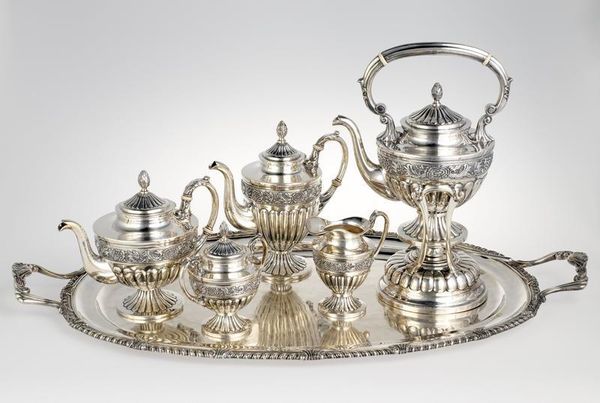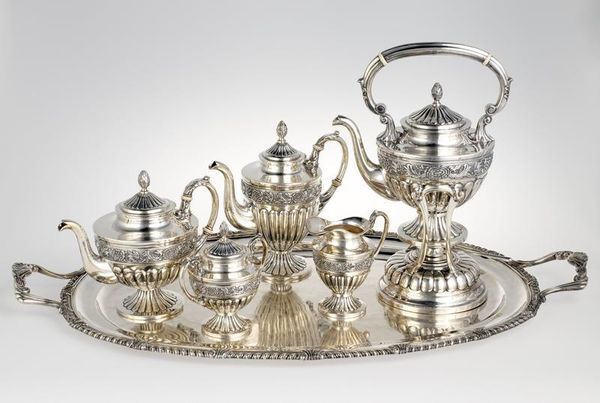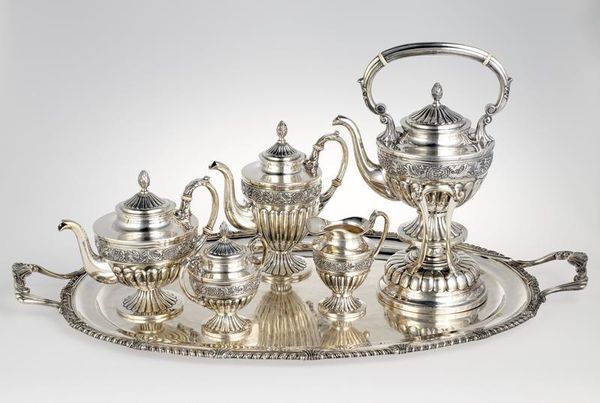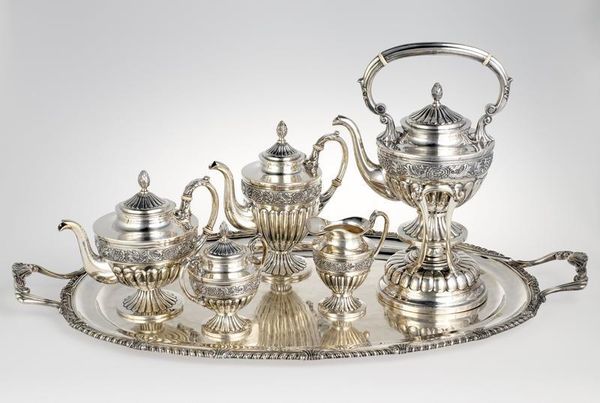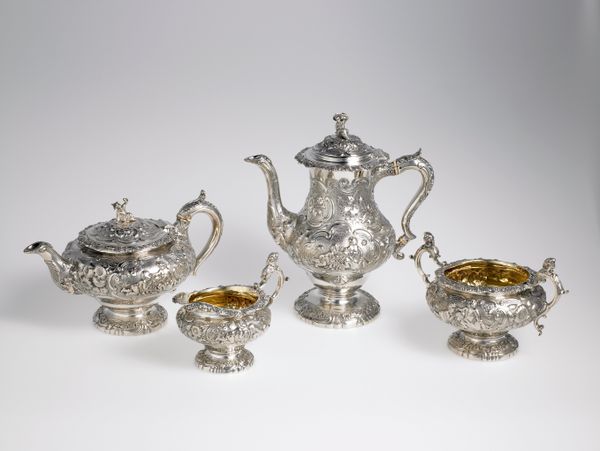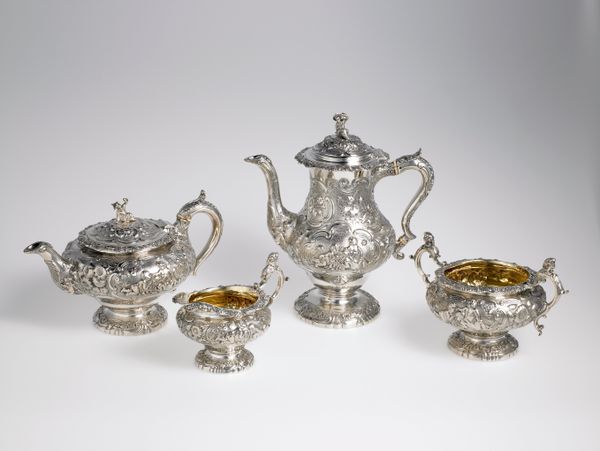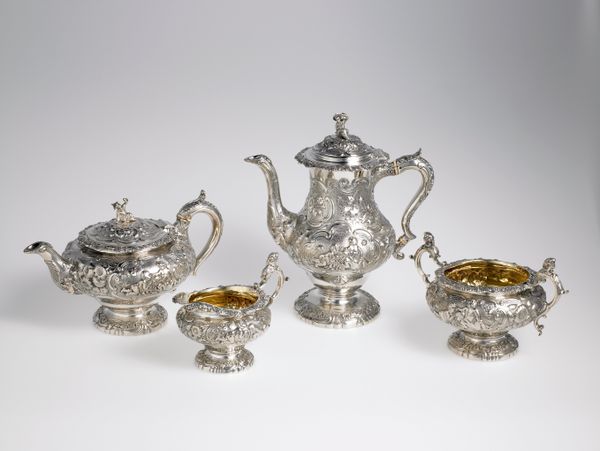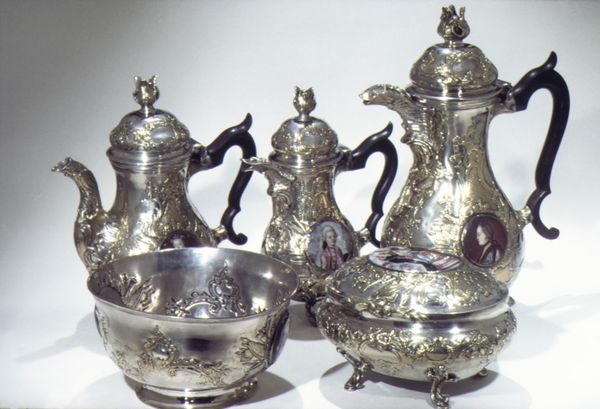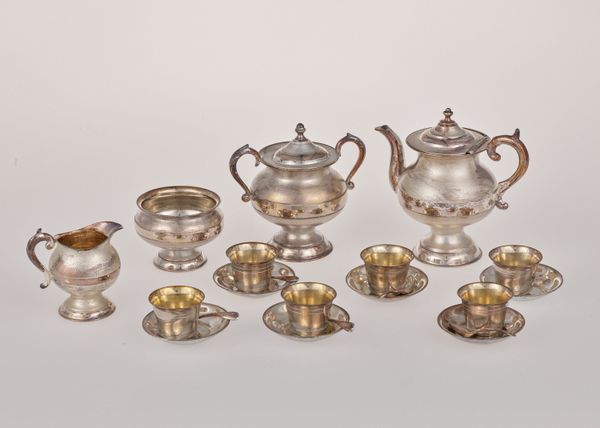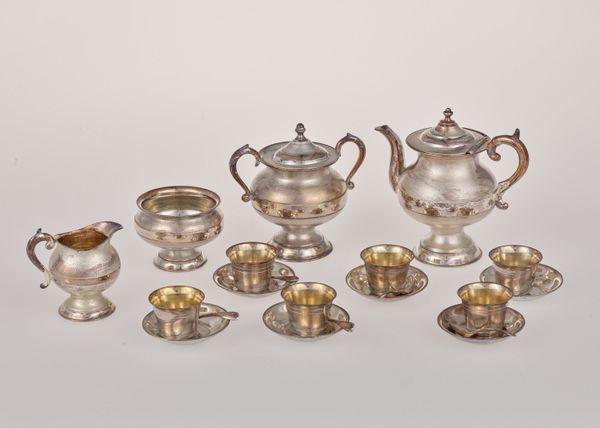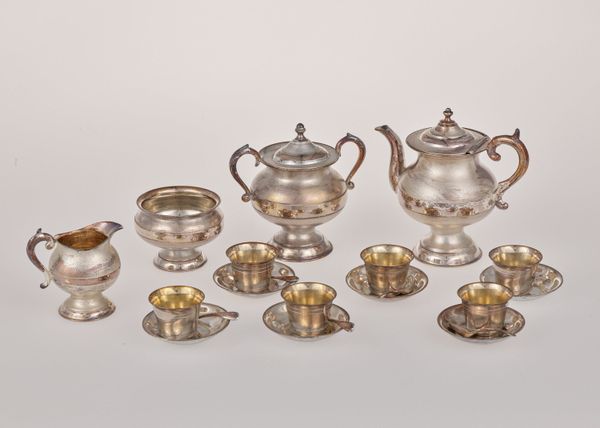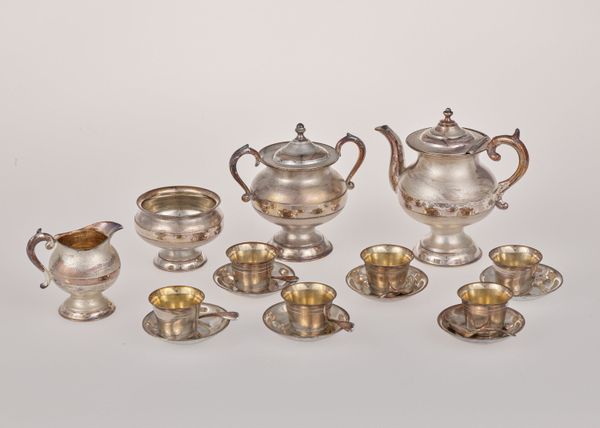
silver
#
silver
#
decorative-art
Dimensions: 5 15/16 x 5 9/16 x 3 3/4 in. (15.08 x 14.13 x 9.53 cm)
Copyright: No Known Copyright
Editor: Here we have a silver creamer, likely crafted sometime between 1950 and 1960, part of the Minneapolis Institute of Art's collection. Its highly ornamented surface really grabs my attention – so detailed. What can you tell me about it? Curator: Looking at this silver creamer, I'm struck by how it speaks to evolving societal values. Decorative art like this wasn’t just about aesthetics. It served as a tool that often communicated one’s status, constructing social identity, right? Who did this kind of silver service appeal to in the mid-20th century, and what was it signaling? Editor: That's a fascinating question. My first thought is probably wealthy families. It suggests formality, elegance... a certain aspiration. Curator: Precisely. The mid-20th century saw shifts in social mobility and consumerism. Silver, traditionally a symbol of established wealth, found itself adapted into a new form. Think about the rising middle class, seeking symbols of upward mobility. Do you think this set participates in a flattening of social and economic divides? Editor: Maybe! So, it's not just a pretty object. It embodies societal shifts and aspirations of a particular time. I hadn't really considered the creamer's place within these power dynamics. Curator: Exactly! Objects like this become charged with meaning. Examining its social role prompts us to question our own relationship to material culture. Editor: This has completely changed the way I look at what might otherwise be overlooked as something as mundane as a creamer. Curator: And hopefully, it has prompted thought of who has traditionally benefited from formal practices, and who may have been marginalized.
Comments
No comments
Be the first to comment and join the conversation on the ultimate creative platform.
